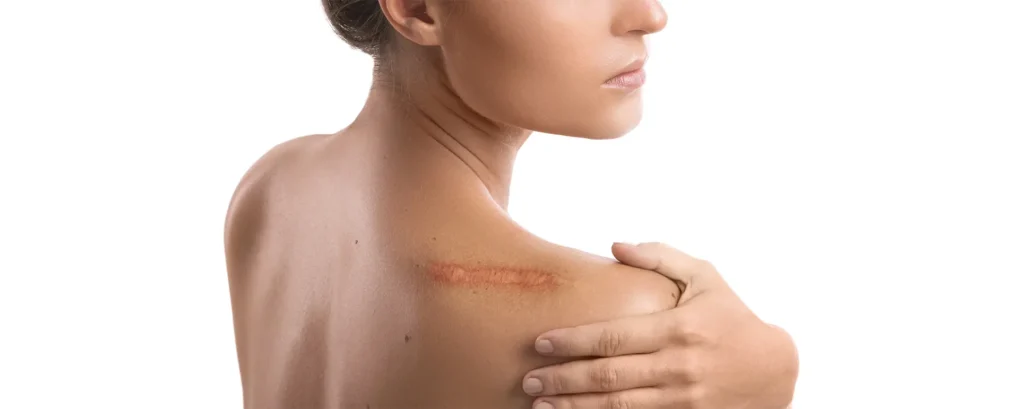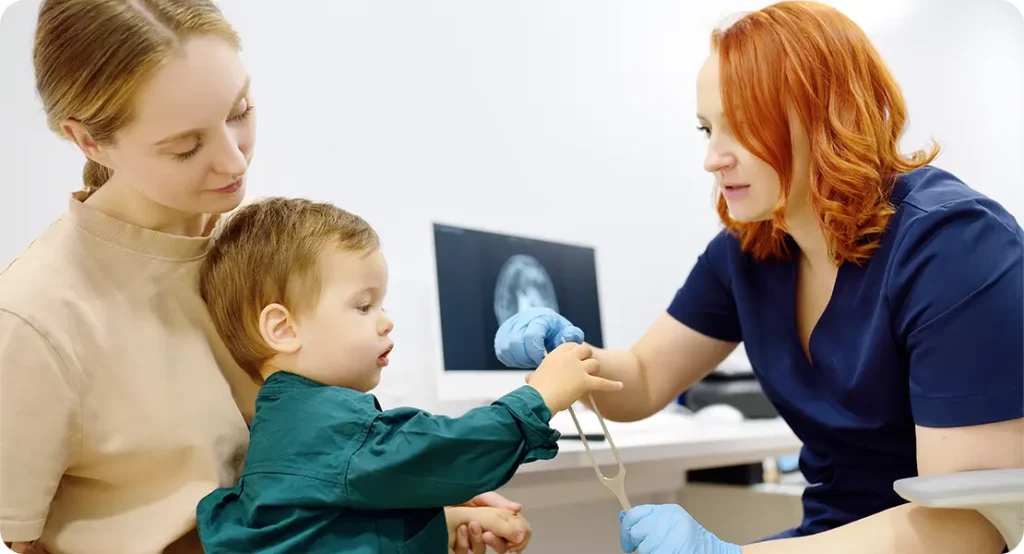Dermatological surgery, whether for removing a suspicious mole, excising skin cancer, or treating cysts and lipomas, doesn’t end when the stitches go in. What follows is a crucial stage that determines not just your recovery, but the final cosmetic outcome as well. Patients often underestimate the importance of post-operative care, believing that once the procedure is complete, healing is automatic.
In reality, how you manage your wound in the days and weeks after surgery can significantly affect how quickly you recover and whether complications arise. This guide will walk you through every stage of post-operative care, from the moment you leave the clinic to the time your scar matures. Understanding what to expect helps reduce anxiety, prevent setbacks, and ensure your skin heals as smoothly and cleanly as possible.
Immediate Aftercare: The First 24–72 Hours
The first few days after skin surgery are all about protection, cleanliness, and minimising irritation. Your dermatologist or surgical nurse will likely place a pressure dressing over the site immediately after the procedure. This isn’t just to cover the wound—it’s designed to reduce bleeding, support skin edges, and absorb any initial discharge. You’ll usually be advised to keep the dressing dry and undisturbed for at least 24–48 hours. During this time, it’s best to avoid strenuous physical activity, bending, or heavy lifting that could place stress on the area.
If your wound is on the face or scalp, sleep with your head elevated to reduce swelling. Mild discomfort, tightness, and bruising are normal and can usually be managed with paracetamol. Avoid anti-inflammatories like ibuprofen unless approved by your doctor, as they can increase bruising. Following instructions closely in this early stage gives your wound the best chance to settle without disruption.
Wound Care and Dressing Changes
Once your initial dressing is removed—typically at 48 hours unless otherwise directed—it’s time to start wound cleaning. Your clinician may advise you to clean the area gently with cooled, boiled water or a saline solution. This helps remove crusts and bacteria while keeping the wound moist, which has been shown to speed up healing and reduce the chance of scarring. After cleaning, a thin layer of petroleum jelly or silicone-based gel may be applied, followed by a clean dressing.
It’s crucial to use non-stick or low-adherence dressings, especially for delicate areas like the eyelids or décolletage. Avoid using antiseptics or harsh ointments unless specifically recommended, as they can delay healing and irritate the skin. Change your dressing once a day, or more frequently if it becomes wet or soiled. Never pick at scabs or crusts—this can introduce infection and lead to poor scarring. Consistency is key: clean, moisturise, cover, and repeat.
Recognising Signs of Infection or Complications
Infections after dermatological surgery are uncommon, especially when good hygiene is maintained—but they can happen. It’s vital to know the early warning signs so you can act quickly. Redness and swelling are expected for a few days post-op, but if these symptoms worsen after day three, or if the area becomes hot, increasingly painful, or starts to discharge pus, you should contact your dermatologist or GP.
A low-grade fever may also indicate infection. Rare complications include wound dehiscence (where the stitches open prematurely), allergic reactions to adhesive dressings, or formation of haematomas (blood collections under the skin). Early detection and intervention are crucial to avoid prolonged healing or permanent changes in skin texture.
Most infections can be treated effectively with a short course of antibiotics, but delaying treatment can result in more significant scarring. When in doubt, always err on the side of caution and seek medical advice sooner rather than later.
Managing Stitches and Suture Removal
Depending on the location and depth of your wound, your dermatologist will either use dissolvable or non-dissolvable stitches. Dissolvable sutures typically break down on their own within 7–14 days, but some types can take longer, particularly in areas like the back or legs where healing is slower. Non-dissolvable stitches usually need to be removed between 5 and 14 days after the procedure, depending on the tension in the area.
Your clinician will schedule a follow-up appointment for this. It’s important not to attempt removing any sutures yourself, even if they seem loose. Premature removal can result in wound reopening. In the meantime, avoid soaking the area in baths or swimming pools, as this increases the risk of breakdown or infection.
If you notice that a stitch has come out early or the wound appears to gape, contact your surgery—some cases may require additional closure or wound glue to support healing.
Scarring: What’s Normal, and What Can Help

Scarring is a natural part of the healing process, but its appearance can vary greatly depending on your age, skin type, the location of the wound, and how well you care for it. Initially, most scars appear pink or red and may feel raised or firm. Over months, they typically flatten and fade, but some individuals may develop hypertrophic or keloid scars, especially those with darker skin tones or a genetic predisposition.
Sun protection is essential during this stage, as UV exposure can cause pigmentation changes, making scars more noticeable. Applying high-factor, broad-spectrum sunscreen to the area for at least 6 months is strongly advised. Silicone gels and sheets have been shown in clinical studies to improve scar outcomes, especially when used consistently for several weeks. Gentle massage of the scar after the wound has fully healed can also aid in breaking down scar tissue. Remember, scars mature over time—patience and protection go a long way.
Return to Normal Activities: What’s Safe and When
Getting back to your regular routine is important, but knowing when to resume specific activities can help prevent setbacks. Light walking and desk work are usually safe after a day or two, but anything that stretches or puts pressure on the surgical site—like gym workouts, yoga, or manual labour—should be avoided for at least 7–14 days, depending on your procedure.
For wounds on the legs or feet, elevation can reduce swelling and improve healing. If your surgery involved the face or scalp, you may be advised to avoid washing your hair for several days or use special shampoo. Makeup should be avoided until the skin is fully sealed, to prevent bacteria entering the wound.
It’s not just about comfort—premature activity can disrupt stitches, delay healing, or lead to unsightly scarring. Always follow your dermatologist’s guidance on when it’s safe to return to exercise, swimming, or direct sun exposure.
Follow-Up Appointments and Monitoring
Dermatological surgery doesn’t end with the procedure—it includes planned follow-ups to monitor healing, assess for recurrence (in cases of skin cancer), and manage any cosmetic concerns. Your first post-op visit is usually scheduled for 5 to 14 days after surgery, particularly if stitches need to be removed.
During this appointment, your dermatologist will check the wound for signs of infection, confirm that healing is progressing as expected, and provide advice for continued care. If a biopsy was performed, this is also when results are discussed. Depending on your diagnosis, additional monitoring may be necessary. For example, patients with a history of basal cell carcinoma may need annual skin checks.
If you’re concerned about the appearance of the scar, you can discuss options like laser therapy, steroid injections, or further revision. Don’t skip these appointments—they’re your best chance at catching problems early and ensuring a smooth recovery.
Long-Term Skin Health After Surgery
Once the surgical wound has healed, it’s worth thinking about what comes next for your skin health. If your surgery was performed to remove a skin cancer or pre-cancerous lesion, your dermatologist will likely recommend ongoing surveillance to monitor for new or recurrent issues. Even if your surgery was cosmetic or benign in nature, taking a proactive approach can prevent future problems.
This includes daily sun protection, regular skin checks (both self-exams and clinical), and avoiding trauma to previously treated areas. You may also be advised to make lifestyle changes—such as quitting smoking or improving your diet—to support your skin’s overall resilience and immune function.
Investing in skincare products that promote barrier repair, hydration, and collagen stimulation can further enhance your results. Ultimately, skin surgery can be both a medical treatment and an opportunity to take charge of your skin health going forward.
Emotional Impact and Managing Expectations
While dermatological surgery is often straightforward, the emotional side of recovery is frequently overlooked. Patients may feel self-conscious about visible stitches, bruising, or temporary swelling—especially if surgery is performed on the face, neck, or hands. It’s completely normal to feel anxious or frustrated during this stage, particularly when the wound looks worse before it gets better.
Being mentally prepared for the temporary changes in appearance can help you stay positive and focused on long-term healing. In some cases, anxiety may stem from the fear of skin cancer returning, or worry about the scar’s final appearance. Speaking openly with your dermatologist about your concerns can offer reassurance and guide you to appropriate support options.
If you’re struggling with your mood or body image post-surgery, don’t hesitate to ask for a referral to a therapist experienced in health-related issues. Emotional healing matters just as much as physical recovery.
Skincare Products to Support Healing

Once the wound has closed and the skin barrier is restored—typically around two to three weeks post-op—you can introduce gentle skincare products to aid healing and improve the appearance of the scar. Fragrance-free, non-comedogenic moisturisers with ceramides or hyaluronic acid can support hydration and skin regeneration.
Vitamin C serums may help brighten the skin and reduce post-inflammatory pigmentation, while niacinamide offers anti-inflammatory benefits and can reduce redness over time. Always patch test new products away from the surgical site first, especially if your skin is still sensitive.
Avoid retinoids, exfoliating acids, or active ingredients like benzoyl peroxide on or near the healing area for at least 6–8 weeks, unless instructed otherwise. Using targeted products can gradually improve texture and tone, but they should always complement—not replace—the basics of sun protection, scar massage, and silicone therapy where recommended.
Special Considerations for Different Skin Types
Skin tone, texture, and type all play a role in how you heal and scar. For example, individuals with darker skin tones are more prone to hyperpigmentation, keloid formation, and prolonged redness, which means extra caution must be taken with wound care and sun protection. Lighter skin tones may be more prone to visible erythema (redness) during early healing, which can sometimes last several months.
People with oily or acne-prone skin may find that occlusive dressings exacerbate breakouts, requiring alternative wound covering strategies. Sensitive skin types may react to adhesives or topical antibiotics, so hypoallergenic dressings and preservative-free ointments are preferable.
Your dermatologist will take these factors into account when tailoring your aftercare plan, but it’s important to monitor how your skin responds at home and flag any concerns. Personalising your healing routine based on your skin’s unique needs can make all the difference in achieving the best results.
Nutrition and Lifestyle Factors That Influence Healing
What you put in your body is just as important as what you put on your skin. Nutrition plays a significant role in wound healing, with protein, zinc, vitamin A, vitamin C, and omega-3 fatty acids all contributing to skin repair, collagen production, and immune function. Ensuring you eat a balanced diet rich in lean proteins, fruits, vegetables, and healthy fats can accelerate your recovery and minimise the risk of infection.
Smokers tend to heal more slowly and are at higher risk of complications, including poor scar formation and wound breakdown, due to reduced oxygen flow to the tissues. If you smoke, reducing or quitting around the time of surgery can significantly improve outcomes.
Alcohol, which can thin the blood and dehydrate the body, should also be limited during the healing period. Staying well-hydrated, getting adequate sleep, and avoiding unnecessary stress are simple but powerful ways to support your recovery from within.
When to Consider Scar Revision or Additional Treatment
Even with perfect aftercare, some scars don’t heal as expected. If your scar remains thick, raised, itchy, or discoloured after several months, it’s worth discussing treatment options with your dermatologist. Scar revision procedures include corticosteroid injections to flatten keloids or hypertrophic scars, laser therapy to reduce redness and pigmentation, and surgical scar excision for severe cases.
Microneedling, chemical peels, or non-ablative fractional lasers may also be considered, particularly for cosmetic improvement on the face or neck. These treatments are generally not offered until the scar is mature—usually after 6 to 12 months.
The goal isn’t to eliminate the scar entirely (which is rarely possible), but to make it less noticeable and more in keeping with your surrounding skin. It’s important to approach scar revision with realistic expectations and to work with a qualified dermatologic surgeon who understands both the function and aesthetics of skin healing.
Children and Skin Surgery: Extra Considerations for Paediatric Patients

When dermatological surgery involves a child, the aftercare process often requires additional care and communication. Children may struggle to understand why the wound must be kept clean and covered, and they may be tempted to touch, scratch, or pick at it. In these cases, securing the dressing properly—and in a way that’s comfortable for movement—is essential. Using fun, patterned bandages or letting the child help choose the dressing can encourage cooperation.
Parents should also monitor for signs of infection or allergic reaction, as children’s skin can be more reactive to adhesives and topical treatments. Pain is typically mild, but younger children may need liquid forms of paracetamol if discomfort arises. It’s also important to prepare the child emotionally.
Explaining the process in simple, age-appropriate language can reduce anxiety and foster a sense of control. Follow-up appointments provide an opportunity to reassure both child and parent that healing is on track and that any scars will likely improve with time.
Dermatologist-Approved Myths to Avoid During Recovery
There’s no shortage of myths and misinformation about wound care, many of which can interfere with proper healing. One common myth is that wounds should be left to “breathe” by exposing them to air—when in fact, keeping a wound moist and covered has been shown to promote faster, cleaner healing with less scarring. Another misconception is that all natural remedies are safe: applying raw honey, coconut oil, or aloe vera directly to surgical wounds without medical guidance can introduce bacteria or delay healing.
People also often believe that vitamin E oil can improve scars, but research has shown it may cause skin irritation in some individuals and doesn’t significantly impact scar quality. Trusting online forums or home remedies over your dermatologist’s advice can do more harm than good. Always stick to evidence-based aftercare and consult your clinician before introducing any new products or routines into your recovery.
Final Thoughts
Dermatological surgery is a journey—not just a moment on the treatment table. Understanding what to expect after your procedure gives you the tools to heal confidently and comfortably. From meticulous wound care and recognising complications, to managing scarring and making long-term lifestyle changes, aftercare is just as important as the surgery itself.
By working closely with your dermatologist, following aftercare instructions, and staying vigilant about changes, you can achieve optimal healing with minimal disruption to your daily life. If you have any concerns during your recovery—no matter how small—reach out to your care team.
It’s always better to ask than to assume. Your skin’s health is worth the attention. If you’re looking for an expert private surgical dermatologist in London, we’re here to help.
References:
- Alam, M., Ibrahim, O. and Nodzenski, M., 2015. Postoperative wound care in dermatologic surgery: a systematic review of the literature. Dermatologic Surgery, 41(5), pp.587–600. Available at: https://doi.org/10.1097/DSS.0000000000000347
- Wetzig, T., Jürgensen, C., Bleyer, A. and Simon, J.C., 2020. Wound healing and wound management in dermatologic surgery: an evidence-based review. Journal of the German Society of Dermatology, 18(5), pp.429–438.
- Work Group, Invited Reviewers, and Butler, D.F., 2016. Guidelines of care for the management of primary cutaneous melanoma. Journal of the American Academy of Dermatology, 74(6), pp.1213–1225.
- Tchanque-Fossuo, C.N. and Kuzon, W.M., 2013. Optimizing postoperative scar outcomes. American Journal of Clinical Dermatology, 14(5), pp.299–308.
- Leeds, I.L., Fang, S.H. and Parmar, A.D., 2021. Strategies to improve patient outcomes in dermatologic surgery: Enhanced recovery and follow-up. Clinics in Dermatology, 39(4), pp.650–658.
